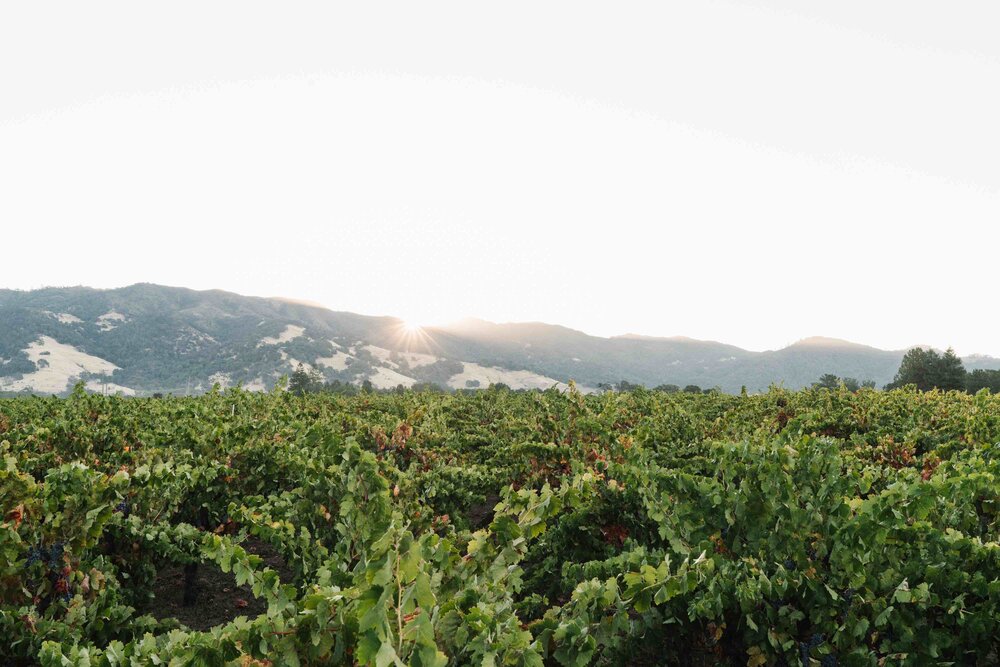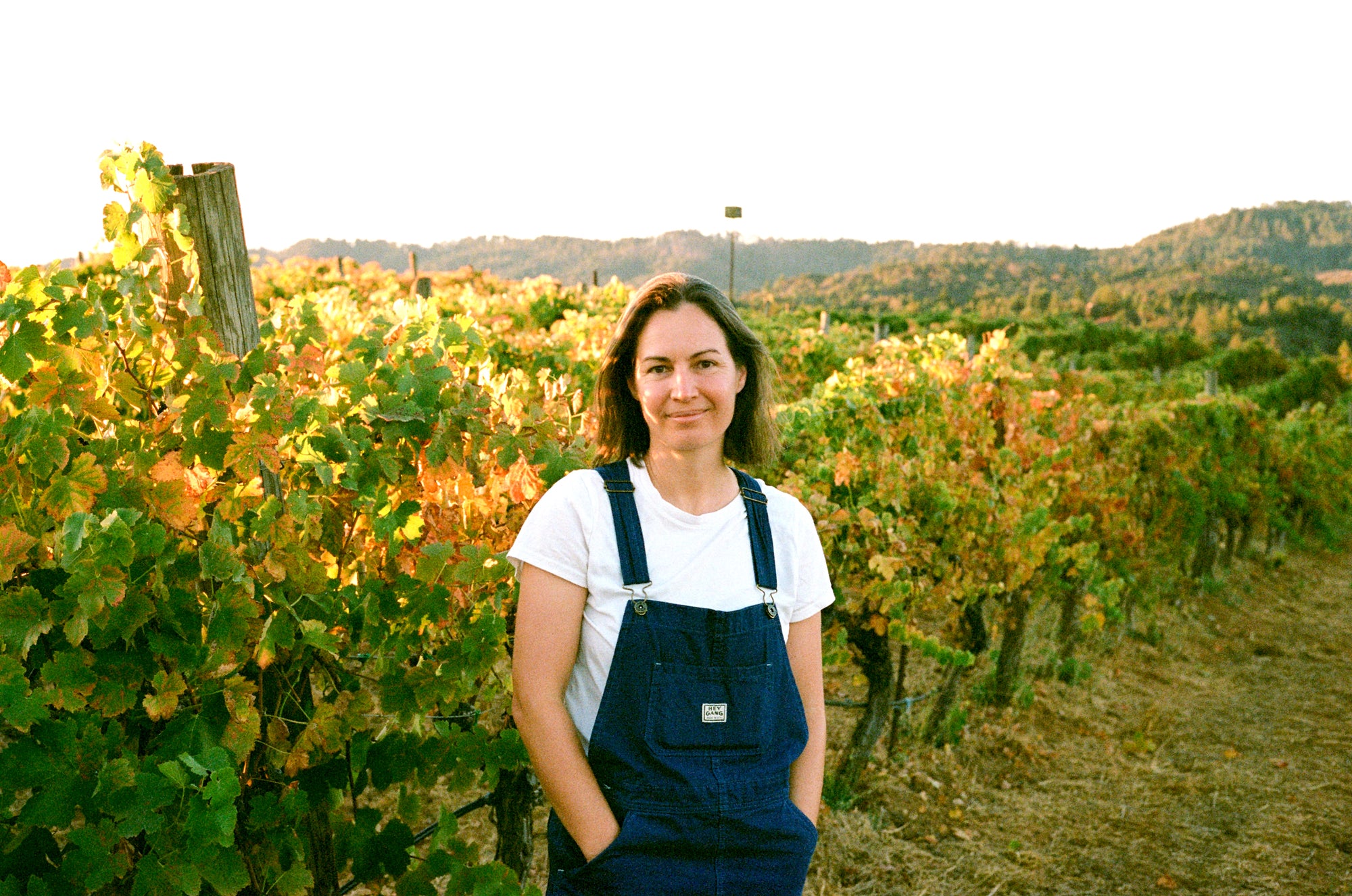This is part three of a six part series that starts here. You can click through to part four at the end of this post.
–
Here in Northern California, our spring and summers are marked with bursting green vineyards. While this time is mostly about bees buzzing around the wild radish flowers between the vines, butterflies flirting, and vine buds bursting forth with the primordia of this year’s wine, there are a few key things winemakers navigate this time of year.

Sun rises over the head-trained vine jungle at Ricetti Vineyard in Mendocino County.
The biggest pathogen on a yearly basis for a grapevines is fungus. In Europe, both downy and powdery mildew are common, here in California, we only deal with powdery mildew, which, lucky for us, is easier to treat (fun fact: different varieties respond to mildew differently, some are very susceptible while others are not). Mildew really loves nice, humid, warm days and cool nights, with temps between 68° to 86°F (don’t we all? Perfect springtime weather in my book).
Another complicating factor is that during the spring, the grapevine is rapidly growing, and all of the vine’s young, light green growth (what I call ‘baby tissue’) is particularly susceptible to mildew since energy is going to growth and not building defense against disease (any other parents out there are shaking their heads in agreement, thinking of how many colds their toddler brought home from daycare in year one?) Other facts: Mildew also loves low light and temps above 90°F make it hard for mildew to survive. Fungal pathogens really love hanging around the humid, lush greenery of the grapevines. It's necessary to do some sort of canopy management during the growing season in order to increase airflow and sunlight around the fruit and reduce mildew pressure.

Carignan clusters staying cool in the afternoon shade at Venturi Vineyard in Mendocino County
How we respond to the fungus among us, depends on your approach to making wine; controlling nature or working with nature. In the industrial vineyard, generally machine leafers come through, hedging the vines and pulling leaves in a vacuum or shearing motion. This one-size-fits-all farming practice leaves some of the clusters totally exposed to the sun (creating sunburnt flavors) and other clusters totally shaded (producing green or even moldy flavors).
In the non-industrial vineyard, we take a lot of time and labor to go through and select specific leaves and shoots to thin off. This time and labor intensive process ensures that the fruit clusters are exposed to a nice, dappled light. We get even fruit ripening, and more consistent airflow. This coupled with choosing a low mildew pressure site, like inland Mendocino where spring is very short and hot weather follows winter relatively quickly, means we spray far fewer fungicides. In fact, we only use elemental sulfur in all of our Mendocino County vineyards, and only make a few passes with it per year. All of our Mendocino County vineyards are also head-trained, which although is more work to prune and pick, also allows for more airflow around the fruit.
This series introduces the ways we work with nature in an effort to help course-correct the California wine industry and make meaningful contributions to the broader movement toward transparency and equity in our food system. It is adapted from Martha’s talk From Grape to Glass: Exploring Natural Wine at Bloom San Francisco 2017.
Photos by Andrew Thomas Lee




